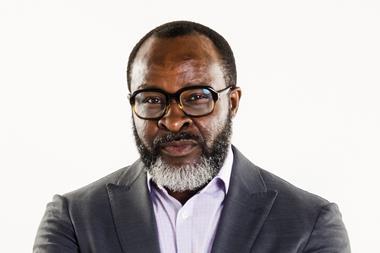With financial collapse usually comes a steep rise in executive liability claims, and yet the hard market expected for 2009 never materialised. But there is still scope for things to change in 2010? Thibaud Hervy at HCC takes a closer look
Market conditions being as they were at the end of 2008, in other words highly conducive to an upward trend in directors’ and officers’ liability insurance (D&O) claims, many insurers and reinsurers predicted the return of a hard market for 2009. This never came to pass.
Today, popular belief would have you believe that the worst of the banking crisis is behind us, 2010 seeing the calm after the storm. Yet many financial lines specialists are advising not to be too complacent; that calm may just be an illusion. One only has to look at various countries’ record deficits; at the fragility and dependency on central banks’ support revealed on some of the largest banks’ balance sheets; at all the companies still facing short- or mid-term (re)financing problems; at the unemployment rates reaching record highs as the ‘real economy’ still struggles through the crisis; at the prolonged sad state of the credit markets, and escalating bankruptcies; or at the bullish but still extremely volatile financial markets.
Despite these turbulent times, today’s market is still viewed as relatively soft, with average premiums way below 2003 levels – the last hard market occurred between 2003 and 2005 – and more or less comparable to what they were by the end of 2002. If we compare the two periods, the main difference is that by the end of 2002, rates had initiated a significant upward trend, while during 2008 and 2009 they remained flat.
Can it be that the market has decided to ignore the financial crisis and the surge of claims in 2007 and 2008, and that it is satisfied by current market conditions? This seems quite illogical. Several key factors can explain the phenomenon that was 2009, however, and may help us better understand today’s situation.
First, the market continued to be affected by fierce market competition that began prior to 2007. Several large carriers not particularly active in D&O outside their domestic markets a few years earlier decided to compete on a larger scale and obtain market share in line with their weight in the overall European property and casualty (P&C) industry. They started to target low programme layers (primary and first excess), entering into competition with well-established D&O market leaders. When the crisis threatened the survival of the largest D&O carriers, these new resourceful competitors saw a unique opportunity to reach their objectives faster than anticipated. This led to aggressive moves to obtain and retain business and of course personnel; there has been an unprecedented number of European senior executives and D&O underwriters moving from one company to another since 2007.
The insurers already active in D&O reacted in different ways. Some reduced their exposure to financial institutions or US-listed companies. Others, however, took the aggressive approach of increasing their market share in those segments, possibly in the hope that the expected hard market would materialise shortly – which it didn’t.
On the buyer side, the crisis also had various effects. During the first half of 2009, having been scathed by issues affecting certain large insurers in the market, many risk managers began to give more time to issues relating to insurer longevity. They began to pay more attention to quality indicators, such as the insurer’s financial strength credit rating, stability and level of specialisation in its lines of business. By the second half of that year, however, and probably due to budgetary pressures brought on by the crisis, these criteria began to be overlooked in favour of competitive pricing. This was true on primary layers, and especially true on excess lines. Continental risk managers, traditionally not very inclined to use London market capacity for risks they can insure in their domestic market, gave the mandate to their brokers to explore the solutions readily available in the City. This was seen as a real opportunity for recently established UK-based carriers to grow and geographically diversify their portfolios.
As a result, 2009 turned out to be a year of contrasts. Commercial institutions continued to benefit from lower premiums and broader coverage, whilst financial institutions faced overall moderate premium increases and a hardening of their insurance policy terms, some more severely than others. This led to a kind of zero-sum game for the insurers. In the end, policyholders, with the exception of a few financial institutions heavily impacted by the crisis, were far from being affected by a hardening market caused by (re)insurers anticipating higher losses. On the contrary, competition had successfully sparked between insurers, encouraged by dynamic brokers who were surprised to be able to negotiate certain conditions upon renewal. In reality, they had anticipated a much more difficult scenario, one for which they had even prepared their clients.
So, what does the rest of 2010 hold in store? Is the hard market ever going to happen? Has the market illogically “jumped” a cycle?
The fact that only the distressed risks saw their conditions change drastically in 2009 could be seen as a sign of maturity of the D&O European market. In 2003 and 2004, the brutal reaction of the insurers across the board led risk managers and brokers to view this market as highly unpredictable and lacking professionalism. This time around, capacity is not lacking and not all clients have been treated in the same manner, even among the high-risk segments, such as financial institutions or US-listed companies. These signs of maturity could be just an illusion too, of course.
D&O insurance forms part of the financial lines (FI) family and as such, D&O insurers often also offer and aggregate in the same profit centre as professional indemnity or FI bond/commercial crime insurance. And for all of those lines, without any exception, the claims activity for 2007 and 2008 does not bode well, as established reinsurers are the first to admit.
2009 claims activity has been better thus far – although one would have to wait another year to be sure – but by looking at the claims amounts currently being processed for the two previous years, timid rate increases in a few risk segments do not appear to be enough to offset the potential reserves insurers may have set aside.
With high financial market volatility and the continuation of company failures that initiated in 2009, 2010 might prove to be a tricky year, as both factors are normally concurrent to a higher D&O claim frequency and severity. Of course, not all bankruptcies lead to claims against a company’s directors and officers, but those that do have proven to be the most costly type of claims, after US securities litigations.
Taking into account the complexity and long-tail nature of large D&O claims, the potential losses relating to 2007-2008 are most likely still not reflected in insurers’ balance sheets today. In fact, the specialist reinsurers are very concerned about the level of reserving they see in some of their clients. Knowing how much needs to be reserved on a D&O claim and when this has to happen sometimes proves to be very difficult. After years of excellent results, D&O insurers, especially those specialising in excess positions, often lack the claims experience. In fact, experienced claim personnel in these lines of business are rare. As a result, reserving philosophies for these lines might differ dramatically from one insurer to another. So one may have to wait until 2011 or later to witness the real impact of this claims peak.
In theory, financial lines insurers ought to bear these factors in mind when pricing current risks. But competition in this insurance market segment is such that we are not witnessing anything of the sort. The situation is precarious and may not be sustainable.
It would seem, therefore, that financial lines experts are right to advise not to be too complacent. The hard market has not disappeared off the horizon and a brutal turnaround of the D&O insurance market can surely still take place, especially if claims from these crisis years coincide with a large natural catastrophe loss. Insurers didn’t face any costly natural catastrophes in 2009, which reinsurers say was out of the ordinary and unexpected. Perhaps for 2010 we should expect the unexpected?
Postscript
Thibaud Hervy is director – international at HCC Global Financial Products, a subsidiary of HCC Insurance Holdings, Inc



















